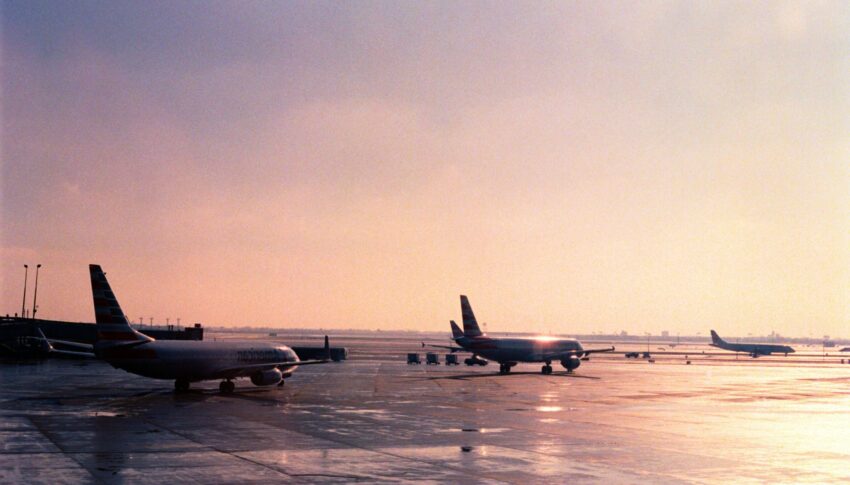As the aviation industry looks to emerge from the worst of the COVID-19 pandemic, it faces key challenges, and ground handling is no different to the rest of the industry in this respect. We caught up with IATA director of ground operationsMonika Mejstrikova just after the 33rd IATA Ground Handling Conference in Prague to learn more about these challenges — and how digitalisation, standardisation and a sustainable mindset is set to help solve them
[Heading links: IATA ground operations | 33rd IATA Ground Handling Conference in Prague]
Like so many other industries, a key challenge in ground handling right now is labour. Fundamentally, Mejstrikova says, even in normal times, “people get hired, they very quickly get trained, [but] the turnover is very high — they very quickly leave [for] better opportunities. And of course, with COVID, and with all the furloughs and in the layoffs, we have lost a lot of skilled staff. And we believe that, definitely, many of them will never come back — a good 30–40% will never return, so we have to now find a way how we can basically address this gap.”

IATA is proposing a raft of measures to attract and retain a new generation of ground operations staff.
To start with, it recommends that governments include ground handlers in wage subsidy programmes (whether that’s a bailout or a model like the German Kurzarbeit), but the primary focus is on making training more efficient, using online training, competency-based learning and assessment, and harmonised training requirements, together with skills passports to demonstrate transferrable skills within aviation.
“Basically,” Mejstrikova says, “your knowledge and experience can be recognised by different employers, regardless if it’s a ground service provider or if it’s an airline… my experience could go with me regardless of who was my employer.”
Fundamentally, though, this is an industry-wide problem, with Mejstrikova citing similar issues in staffing flight decks, cabin crews, air traffic control towers, maintenance hangars and engineering departments.
IATA also has its eye on the growing technological advancements in ground operations. Just looking at bag loading, for example, “tomorrow when we might be operating more sophisticated vehicles, or some kind of robots or robotics, of course, the skill set behind that will be slightly modified,” Mejstrikova suggests, highlighting that a key piece of work that needs to happen is a more global ground handling technology roadmap.
Digitalisation can in many ways help with both the labour shortage and wider efficiency. As just one example, Digital Timestamp Turnaround, Mejstrikova explains, uses analysis of the cameras already at an airport stand to record, monitor, timestamp and analyse every part of a turnaround: from arrival to chocks, cones to the jetway, baggage belt to fuel, and more. Machine and human analysis can then magnify the effect of these data to determine where there is space to optimise processes, reducing both cost and staffing requirements.
The CEDAR — Connected Ecological Digital Autonomous Ramp — initiative, too, is a ramp-of-the-future initiative that looks to enhance and harmonise stand design, modernise and standardise equipment and processes, and digitalise the entire turnaround process.
Standardisation is also the watchword within the IATA Ground Operations Manual, where safety and risk reduction is driving implementation.
This is especially true at outstation airports where contracted ground handlers are used: while an airline may have standardised its own practices, if at a particular airport a handler is serving ten or twenty different airlines, having standardised ground operations practices reduces complexity, confusion, injuries and damage.
The manual, called IGOM for short, is now in its tenth edition, with some one hundred airlines and a further hundred ground service providers implementing its recommendations, and IATA is now launching the IGOM Portal. This, Mejstrikova says, “is a free platform where all the airlines and ground service providers can upload their gap analysis versus the IGOM and they can prove freely that they have implemented harmonised global procedures, and potentially they can even file a system of variations.”
IATA is also changing the ISAGO — IATA Safety Audit for Ground Operations — audit programme to match up against IGOM, so that when auditors arrive they will be auditing directly against the manual, further reducing the need for multiple different audits.
Altogether, Mejstrikova says, the mood in the industry is a positive one as the industry looks to emerge from COVID-10: “people are eager: developing new things, being innovative, supporting their resilience.”
Author: John Walton
Published: 8th February 2022
Feature image: by Olivia Anne Snyder on Unsplash
Article image: Photo copyright @IATA




